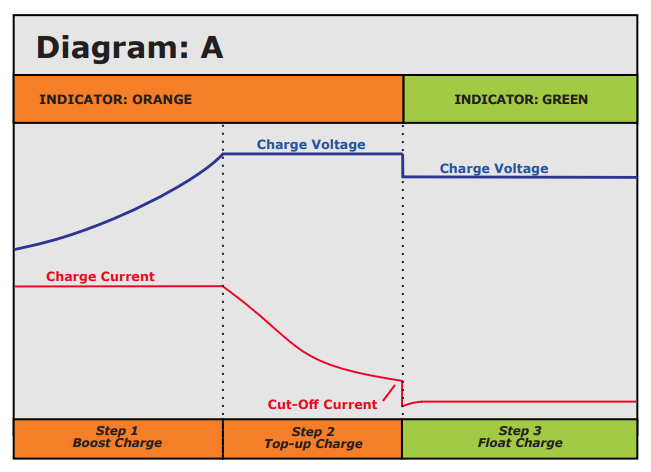I’m just fine-tuning my regulators.
What’s the perfect value for a 12v system?
14,0-14,2? Concorde battery.
Raven wrote:
14,0-14,2? Concorde battery.
I had a quick look at Concorde documentation. The “perfect” value (in the sense of maximizing battery life) depends very much on the battery operating temperature and possibly also on the exact battery model.
I suggest you look up the documentation for your particular battery here.
Seems pretty obvious that the perfect voltages are 6 and 28. Or 496 for higher powered stuff.
There is no perfect voltage in that sense, other than too high is definitely not good, and too low doesn’t charge it. There are optimal ways of charging batteries according to the battery chemistry. Electric cars use optimal procedures (they use the high voltage main battery to charge and maintain the 12V battery). I don’t see how that is even possible with a simple engine driven alternator. To get a long life out of a battery, it needs to be charged continuously also when not in use. When the aircraft is sitting around in the hangar, a battery charger should be plugged in.
Ok. I will set it 14-14,2 and that’s it.
Thanks.
I found this by googling on battery charging voltage temperature dependence and it contains this table

which suggests 14.0 or 28.0 as being suitable for typical N European operations, especially if the battery is likely to be in that temp range during flight, in most GA types. Not all though; some mount the battery in the engine compartment where it could be sitting at say -20C when at altitude.
Concorde sell temperature sensors but AFAICT they are intended for NICD batteries which have a much bigger problem with the temperature coefficient of voltage, but aircraft chargers are still delivering just a constant voltage to these, which is dumb and dangerous unless the battery temperature is sensed during charging

Thanks Peter for explanation.
I don’t have such fancy equipment :)
14,0V-14,2V is a “sweet point” I think.
Take a look at some of this on voltage regulators. You just need to adjust yours to 14.0V. There is a procedure for doing it without the engine running and the avionics connected. If adjusted right, the field current gets modulated around the right supply voltage.
It is easy to blow up your avionics if the voltage regulator fails, etc, even though the modern (post 19th century) ones have an overvoltage cutoff.
I would still say the single one thing you can do to get the most out of the battery is to keep it charged continuously with an electronic charger.

Let’s say you fly once every other week or something similar. The only thing your battery sees is some kind of top-up charge at constant voltage, with an arbitrary current, which in case the battery is poorly charged to start with, will be way to high. It never sees the boost charge at constant current and regulated voltage. It never sees the top-up charge with monitored current and regulated voltage. Most importantly, it never sees the float charge at low voltage.
Boost charge with too high current (which is what you get when the current is un-regulated) will shorten the life unnecessary. Float charge will prolong life. LiFePO batteries are identical. Li-Ion are almost the same, but Ni batteries are completely different animals.
Yes; a trickle charge is probably the best thing, but is not feasible unless you have your own hangar (or similar) where you can plug it into the mains, and you have a suitable connector on the outside of the aircraft.